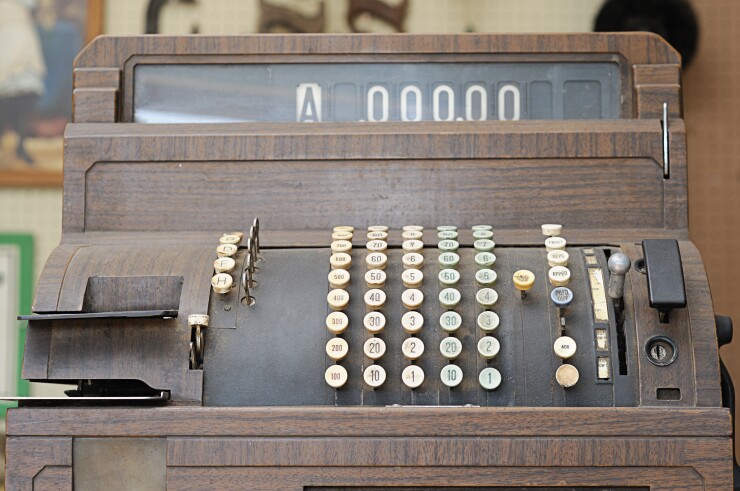There are still millions of merchants in the U.S. clinging to relic point of sale methods — and they are not easily swayed by fancy new touchscreens and mobile wallets. This means electronic payment companies such as Verifone must go to greater lengths, just to meet them halfway.
These merchants aren't just the older, sole proprietors who prefer a simpler way of running their business — they're also the fast-food chains whose ticket sizes are so small that they don't fear the consequences of the EMV liability shift; or they're ultra-local service providers who don't need to sell online and thus aren't swayed by devices designed to track sales across channels.

"We had a call with a an acquirer of ours who told us they still have clients that don't support EMV or contactless," said Jeff Wakefield, vice president of sales enablement in the Americas for Verifone. "The acquirer mentioned tens of thousands of them were still debating to make some interim move, or to go straight to newer options."
Even years past the card networks' liability shift date for accepting EMV-chip card payments, many merchants still see the upgrade as too much of a hassle. To address this concern, Verifone has entered into a collaboration with Mastercard to expedite the certification of contactless payment systems, providing more options for acquirers and merchants that have not yet supported EMV card and contactless payments.
Also, many small-business owners perceive EMV payments as taking longer to complete, creating the perception of longer lines at checkout. Certifying more contactless-capable EMV terminals would solve that problem by offering a payment type that had both EMV protection and is faster than traditional magnetic stripe payments.
By expediting certification, Verifone can offer a greater range of easy-to-deploy cloud-based contactless and EMV-ready terminals, including terminals that take advantage of the higher-technology EMV cards. This allows payments to be integrated with marketing campaigns such as loyalty perks, CRM programs and other incentives that would make a merchant more likely to embrace new technology than if it were based on payment transaction alone.
There is a substantial addressable market. EMV adoption based on merchant locations passed 50% in 2017, according to
"There are lots of EMV challenges yet to be overcome in the U.S. Restaurants have very low adoption. The deadline for fuel stations still hasn’t arrived yet," said Rick Oglesby, president of AZ Payments Group.
Fuel stations have until October 2020 to support EMV payments at the pump. Other merchants faced a deadline of October 2015. After that date, the card networks shifted the fraud liability to the party that had the least security, such as a merchant that supports only magstripe card payments. The card brands are also phasing out the requirement to authenticate by signature.
"The customer experience is inconsistent," Oglesby said. "Signature requirements are getting
Contactless and mobile transactions had no such deadline for acceptance, and are still not widely supported in the U.S. Merchants that upgrade to EMV can add contactless acceptance in the process, but many do not. "The hardware that we have been shipping has contactless readers, but not all of them can do EMV contactless," Verifone's Wakefield said.
There's likely not going to be a lull in certification needs, especially as the gas station EMV deadline approaches.
There is some funding from both Visa and Mastercard to Verifone accommodate the greater expense of faster certifications, according to Wakefield, though Verifone would not disclose the amount of funding.
Verifone also did not give a firm timeline on when point of sale device certifications for EMV will be complete, though Wakefield said it should be a matter of months. The timetable includes a couple of new products that Verifone plans to release on its Engage product line, which is part of Verifone's strategy to reach out to
"The list is fairly lengthy as there are a large number of products and acquirers in North America that all have certification tests," Wakefield said.
The primary benefit of EMV certification for both contact and contactless payments is transaction speed. This should appeal to merchants that accept a large number of small-value payments, Wakefield said.
"It will still take a while once the certifications are done," Wakefield said. "There are still segments that have been slower to adopt, but they will be able to access more devices."
To speed contactless and other digital payments adoption in the quick-service space, Verifone recently entered a collaboration with





